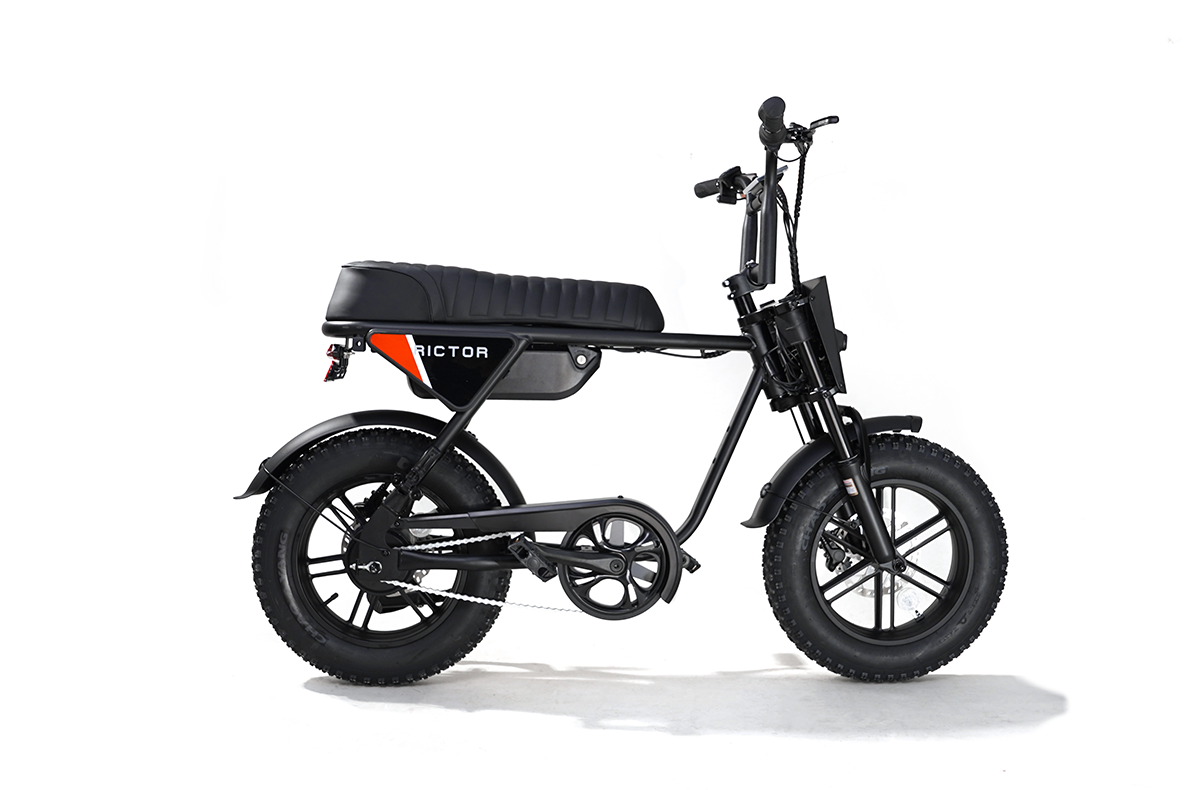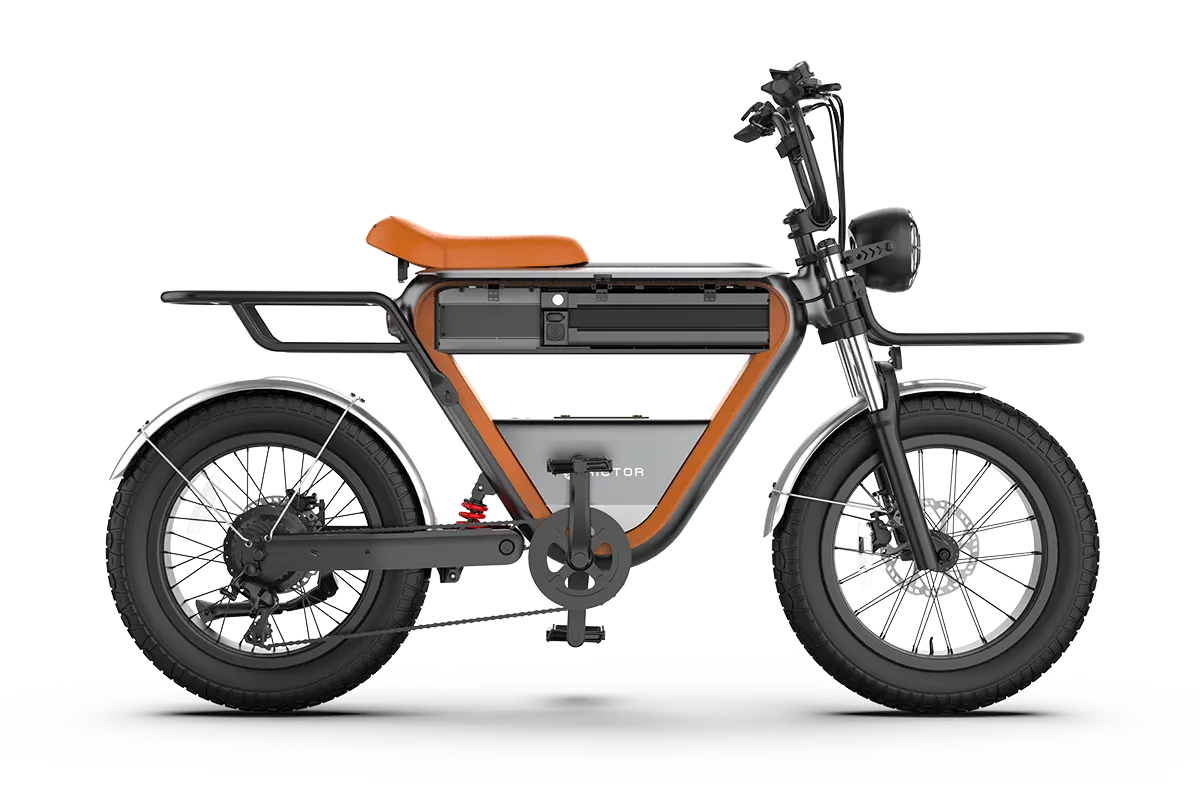
How To Choose an Electric Bike for Heavy Adults
Electric bikes come in a variety of sizes and weights, but when you’re on the heavier side, it’s important to choose one that’s up for the challenge.
Typically, an e-bike can weigh anywhere from 40 to 70 lbs. Some of the heavier bikes, like fat tire or cargo bikes, may even tip the scales closer to 80 lbs.
Am I Too Fat for an Ebike
The short answer is: no, you're probably not too fat for an e-bike!
Electric bikes are designed to support a wide variety of riders, but the weight capacity can vary from one bike to another.
Most standard e-bikes typically support riders up to 250-300 lbs.
If you're on the heavier side, it's important to choose an e-bike that can handle more weight.
Want to make sure you're riding safely and comfortably?
Then pick a bike with a higher weight limit—think 350 lbs or more.
Why? Because these bikes are built to handle more weight, with tougher frames, stronger motors, and super-durable tires.
Fat tire bikes, cargo bikes, and off-road bikes are all better suited for heavier riders, thanks to their stronger build and higher weight capacity.
RICTOR K1 fat tire electric motorcycle with limit weight 260IB is not bad idea for big guy!
SEE ALSO Which Electric Bikes Have the Best Pedal Assist?
What Electric Bike Holds the Most Weight
Generally, cargo bikes and fat tire bikes take the lead when it comes to weight capacity.
These bikes are designed to carry heavy loads, whether that’s extra gear or a heavier rider.
Many cargo e-bikes can support up to 400 lbs or even more, thanks to their reinforced frames and powerful motors.
Fat tire bikes, with their rugged tires and sturdy build, usually support around 350–400 lbs.
But here’s the thing: it’s not just about the rider’s weight. It’s also about the total load.
Your gear, bags, or anything else you’re carrying will add to that weight.
So, if you're planning on using your bike for more than just a quick ride around the block, check the weight limit and the effective load capacity.
For example, if your bike’s frame and cargo area are already designed to hold 75 lbs of cargo, then that’s subtracted from the total weight capacity.
So, if you’re looking at a bike with a 400 lbs capacity, and you plan to carry 75 lbs of gear, the remaining weight you can carry on the bike is 325 lbs.

What Happens If You Exceed the Weight Limit on an E-Bike
When you load up more than what the bike’s built for, you’re putting stress on the frame, the motor, and the tires.
And trust me, that’s a recipe for trouble. your bike could get wobbly and unstable. If the frame wasn’t made for that extra weight, it could bend or even snap.
Not only would that be dangerous, but fixing it could cost you a lot. The motor will also start to struggle.
It's meant to power you within a certain weight range, so if you exceed that, it could have a hard time giving you enough juice to get up hills or get you moving quickly.
You might notice the battery dying faster than usual, too.
And let’s not forget about the tires. They can wear down way quicker, or even pop.
They’re not built for extra weight, so they might lose grip or wear unevenly.
If you’re regularly going over the weight limit, you’re probably going to shorten the life of your bike and have a much bumpier ride.
How To Choose an Electric Bike for Big Guy
When you’re choosing an electric bike as a heavier rider, there are a few key things.
Check the weight limit
Look for a bike with a weight capacity of at least 350 lbs or more. This ensures it’s built to handle your weight and any extra gear you may carry.
Strong frame
Choose a bike with a sturdy frame made from materials like aluminum or steel. Bikes like fat tire bikes and cargo bikes are often better for heavier riders because they have reinforced frames designed for extra load.
Powerful motor
You’ll want a motor strong enough to handle your weight and any extra gear.
A 750W to 1000W motor is ideal for heavier riders.
It’ll give you the power to climb hills and keep a steady speed, even with the extra load. If you’re riding on rougher terrain, a mid-drive motor is a solid choice since it offers better torque and efficiency for those uphill climbs.
Comfort
Opt for bikes with good padding and support in the saddle. A full suspension system is also a must to absorb bumps and make for a smoother ride, especially on rough terrain.
FAQs
How powerful should the motor be for a heavier rider?
For a rider over 250 lbs, look for a motor with at least 750W to 1000W of power. This will give you enough strength to handle extra weight and climb hills without struggling. A mid-drive motor is great for off-road terrain as it offers better torque and efficiency.
How can I ensure a comfortable ride as a heavy rider?
Look for bikes with a padded seat and full suspension systems. This will help absorb bumps and provide a smoother, more comfortable ride, especially on rough or off-road terrain. Comfort is key, especially if you plan on riding for extended periods.
Can a 300 lb person ride an electric bike?
Yes! Many electric bikes are designed to support riders up to 300 lbs, and some models can handle even more weight. Be sure to choose a bike with a higher weight limit, ideally 350 lbs or more, for a smoother and safer ride.




